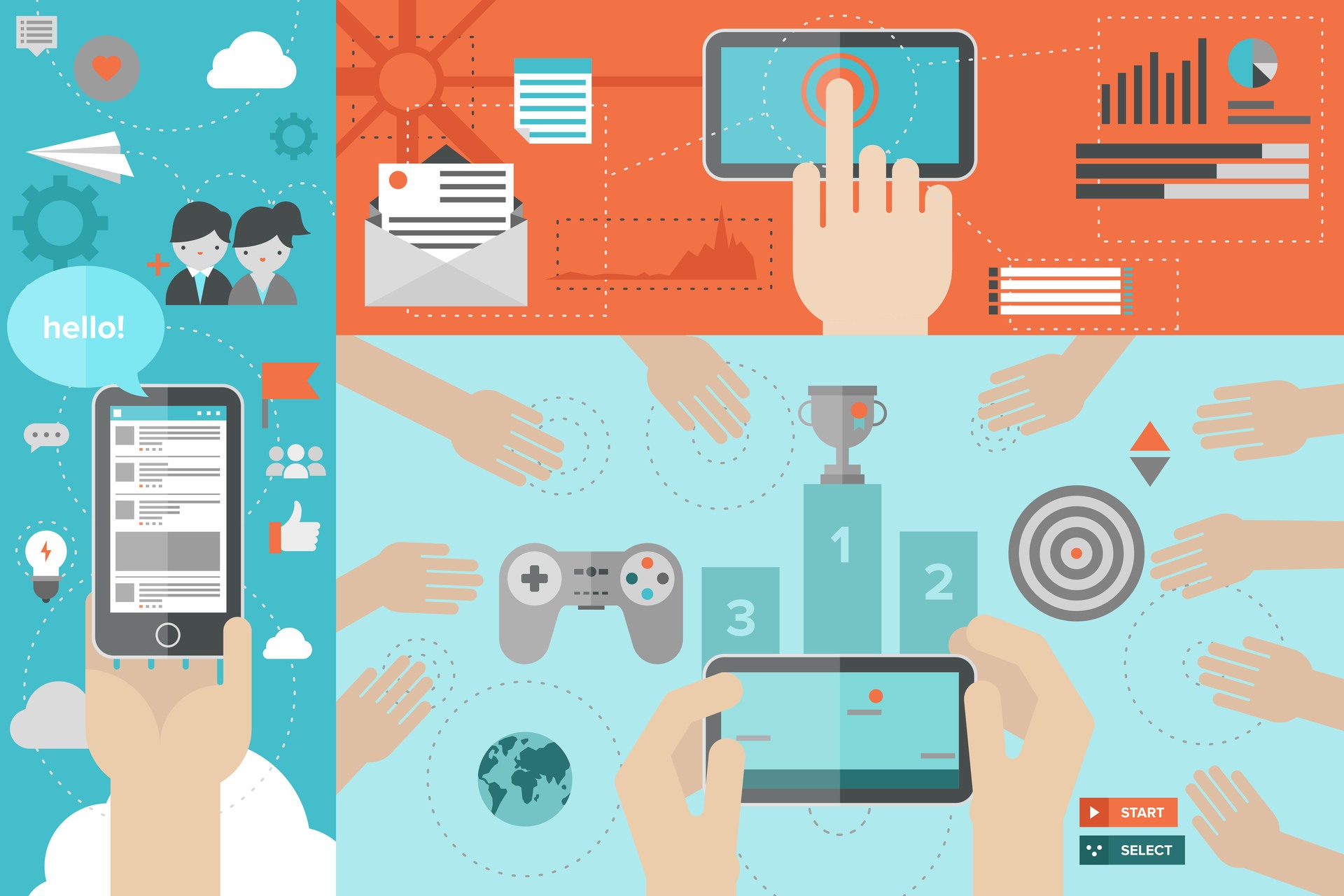“When designed correctly, gamification has proven to be very successful in engaging people and motivating them to change behaviors, develop skills or solve problems,” according to Forbes magazine. The key is to make sure your gamification strategy includes defining business objectives as well as application definition, deployment and adoption.Starbucks is a great example of a company effectively using gamification to drive employee and customer engagement and growth. Their loyalty program is designed to make earning and tracking rewards fun and exciting. Users get stars every time they use a registered rewards card or the My Starbucks Rewards app to pay for a drink, and different levels have additional perks. Users also earn badges for various activities.
Gamification caters to extrinsic and intrinsic motivators. Rewards and incentives are the obvious motivators, but employees are also motivated by intrinsic motivators such as the desire to see progress and results, as well as the need to belong and connect with others. Dr. B. Lynn Ware, president & CEO of Integral Talent Systems, reported in Corporate Universities: Lessons in Building a World-class Work Force that retention and absorption levels through gamification are ten times higher than through traditional learning techniques or computer-based learning.The Boy and Girl Scouts of America have effectively used gamification techniques for years. Children love adding merit badges to their uniforms as symbols of achievement and status. The goal of obtaining every additional badge motivates children to learn and change behavior. This applies to adults in the business world as well.
4 Important Questions You Have To Answer As You Design A Gamified Learning Experience
- Who is your audience and what motivates them?
- What kind of rewards appeal to your customers?
- How will the game mechanics work in your overall strategy?
- How you will measure the success of your program?
You need to be able to clearly answer these questions in order for your gamification strategy to be a success.Here is another example for Starbucks, as outlined in Michael Hugos’s book Enterprise Games. Hugos was the CIO of a national distribution cooperative that delivered non-coffee items such as paper cups, napkins, etc. to all Starbucks stores in the country. He was facing a lack of cooperation and micromanaging between the members in the cooperative, Starbucks stores and the suppliers. Suppliers weren’t shipping on time and Starbucks frequently made last minute orders, both of which resulted in increased shipping charges. Hugo’s cooperative was in charge of the distribution; he was the link between Starbucks stores and the suppliers, so he created a gamified data center that served two purposes:
- The cooperative members could see each other’s performance. For example, if a member shipped late he or she would get bad reputation points, which were visible to others inside the cooperative. This leaderboard encouraged all members not to fall behind, since everyone knew how everyone else was performing.
- Once the data from everyone in the supply chain was made available and shared to all the parties (suppliers, distributor and Starbucks stores) in real-time, they self-organized and began collaborating as opposed to fighting.
Hugos was inspired by video games in his design. The gamified system increased cooperation and productivity, resulting in a larger number of ground shipments, giving the company greater profit margins and allowing the cooperative to charge 2% to 4% extra for a commodity item (paper cups) to Starbucks due to increased efficiency of Hugo’s gamified IT system.Hugos was able to achieve through gamification what Michael Porter, a leading authority on competitive strategy, advocates is the purpose of a business strategy: to increase profits by cutting costs and/or rising the price of your product or service.
Ready to gamify your e-Learning or online training?
Here are 2 great resources to help you get started!
- How to Use Games to Increase e-Learning Interactivity
- 5 Best Practices for Incorporating Games into Training Courses
Plus, download this sample e-Learning course and learn several methods to create games, including Lectora e-Learning software's built-in interactive games and your own custom games built from actions and variables: Intro to Gaming Course
Or, watch this video and learn how to use variables to keep score in an interactive game in your e-Learning course: Use Variables to Keep a Score in Lectora








